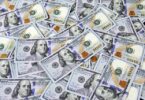aNewDomain — A deluxe version of Led Zeppelin’s finest hour (well, hours) in the studio, Physical Graffiti, is out there now. And if you’re a rock music lover, Physical Graffiti Deluxe is simply a must-have.
Led Zeppelin recorded the eight songs that would grow into the double-length album Physical Graffiti at the Headley Grange house in East Hampshire, England, on February 24th, 1975. These sessions actually made up the second time that the band had tried to record tracks at that location.
The first time around, in November of 1973, John Paul Jones was said by Jimmy Page to have taken ill and therefore the sessions had to be canceled. However, the true story seems to be that Jones had grown “sick” of relentless touring and the rock’ n’ roll road life, and was seriously considering quitting the band and becoming the choirmaster at Winchester Cathedral. Band manager Peter Grant suggested to Jones that perhaps he was just fatigued by Led Zeppelin’s unrelenting touring schedule and probably just needed to take a break. Indeed, after the following Christmas holiday Jones did change his mind and choose to remain with the band.
The eight original songs that the band had composed for what became Physical Graffiti were too long, in total time, for what a two-sided single LP record could hold in the mid-1970s. So the band decided to indulge in making the recording four-sided by bringing in some old recordings that hadn’t made it onto the records they were originally recorded for. These included what was going to be the title song for the previous album, “Houses of the Holy”, as well as two more outtakes for that album’s sessions, one from the Led Zeppelin III sessions, and three from the Led Zeppelin IV sessions. The old recordings were remastered so that they would sound as if they belonged together with the eight new songs.
After additional overdubs were laid down and the final mixing of the recordings was done at Olympic Studios in London in October 1974 by Keith Harwood, the album was ready.
The result was what many — including Jimmy Page — believe to be the greatest studio recording the band ever did.
Magical Graffiti
The great power behind Physical Graffiti (so named by Page to reflect that the album was a physical manifestation of the band members’ mentality within the context of the era when spray paint graffiti had first been appearing on buildings and structures) is found in its diversity. On no other album are Led Zeppelin so completely revealed in all of the aspects of their music: Delta, Chicago, country and acoustic blues; edge-of-mayhem rock; progressive or “art” rock; Celtic guitar music; and even a funked-up R&B thing. The album is also, most likely, the one where John Paul Jones makes his most creative musical contributions to any of the band’s studio albums.
It’s also true that Headley Grange held special magic for Page, who loved the powerful, sonorous drum sound that could be captured there — the drum tracks to “When the Levee Breaks” from Led Zeppelin IV had been recorded there — and also found that something about the place could bring songs out of thin air.
But all things considered, Physical Graffiti is a recording of every facet of the band’s music made at the time when the members were at the peak of their powers. I remember owning the album on vinyl and it was always one of my two favorite albums by the band (the other one being 1976’s Presence, which always sounded to me as if it could have served as sides five and six of Physical Graffiti). No other single piece of work ever defined Led Zeppelin the way this double album did.
Even the vinyl album cover — a photograph of two five-story buildings from a tenement block located at 96 and 98 St. Mark’s Place in New York City, which then had the windows filled in via the inner sleeve with various images and illustrations by designer Peter Corriston — reflected the band’s inner fire at the time.
Deluxe Graffiti
On the newly released deluxe edition of Physical Graffiti, the seven bonus tracks, which are rough recordings of seven of the songs on the album before their final mixdown for the original album, show forth the creative powers of the band at the time even more. My personal favorites among them: “Brandy and Coke” (the original version of “Trampled Under Foot”), the drier, alternative version of “In My Time of Dying”, and “Driving Through Kashmir” which is a “rough orchestral mix” of “Kashmir” without the later, final drum treatments.
It would only be a couple of years later when Led Zeppelin’s nadir began. Although by that time more popular in North America than ever before, the band was splintering by 1977. Page would become a heroin addict for a few years. Robert Plant’s young son Karak would die of a rare form of cancer and the singer would cut off communications with Page, blaming the guitar player’s interest in black magic for his son’s death. John Bonham’s heavy drinking would turn into the alcoholism which would eventually contribute to his death in September 1980.
So Physical Graffiti may be considered the perfect artifact from the perfect time for hard rock’s most legendary band.
As quoted in ‘Trampled Under Foot’, by Barney Hoskin, of the Physical Graffiti recordings Page said:
“With Physical Graffiti you can see all the different things that we were able to do that people can’t do now – constantly working in a positive way, for no other reason than making good music. It wasn’t to be on Top of the Pops or to be doing an interview.”
Recording engineer Ron Nevison said:
“Jimmy was so well-prepared. He used to come into the truck and he’d listen to the whole thing. At that time I thought he just didn’t like his guitar. But then I realised that he was doing what I do now, which is to take the guitar down to make sure the drum track is solid.”
And this from Robert Plant, speaking in 1975:
“It’s always a case of getting together and feeling out the moods of each of us when we meet with instruments for the first time in six months…playing anything we want…Some of the new stuff came directly from this approach, like ‘Trampled Under Foot’, which was just blowing out, and some comes from Jonesy or Pagey or myself – seldom myself – bringing along some structure which needs working on. Then the four of us inflict our own venom on it to develop the idea.”
After 1976, Plant never had such venom again.
For aNewDomain, I’m Brant David.













